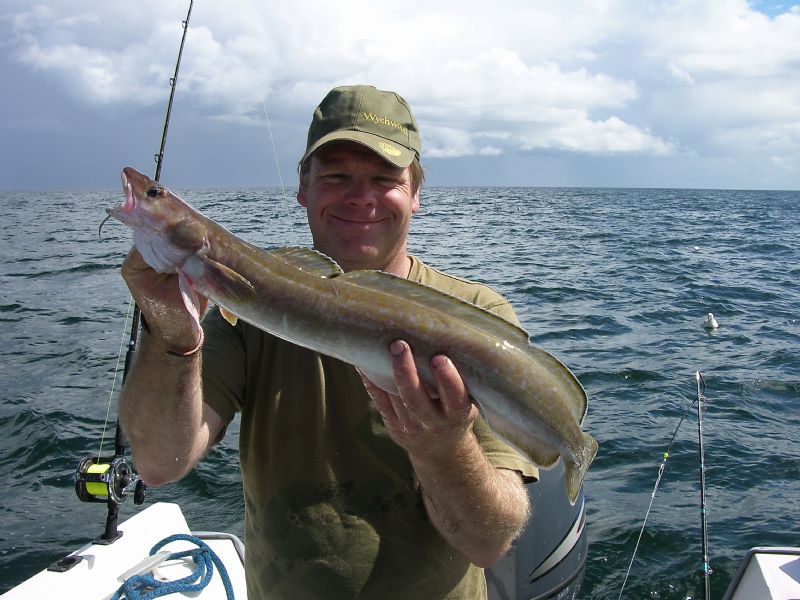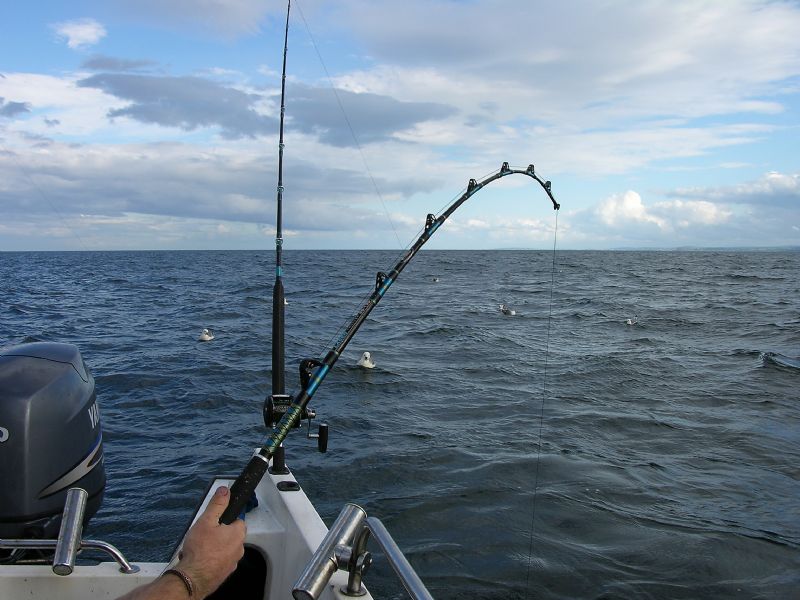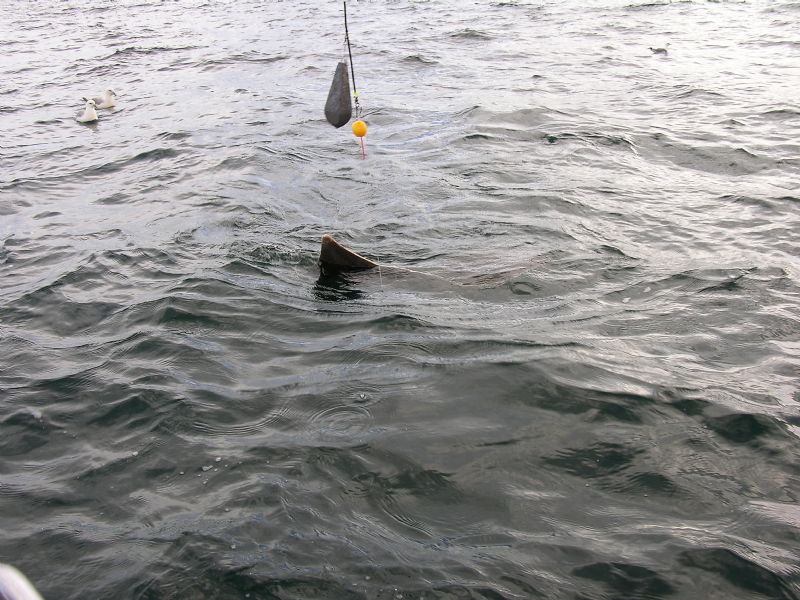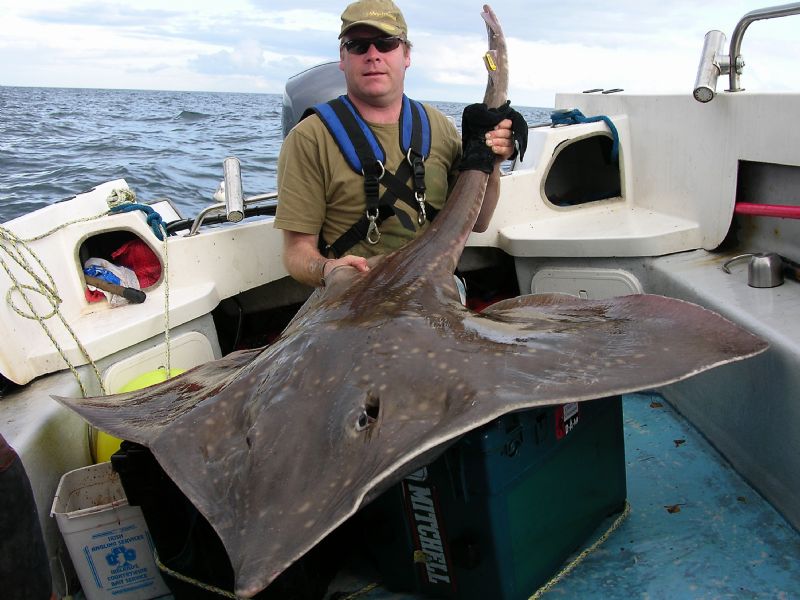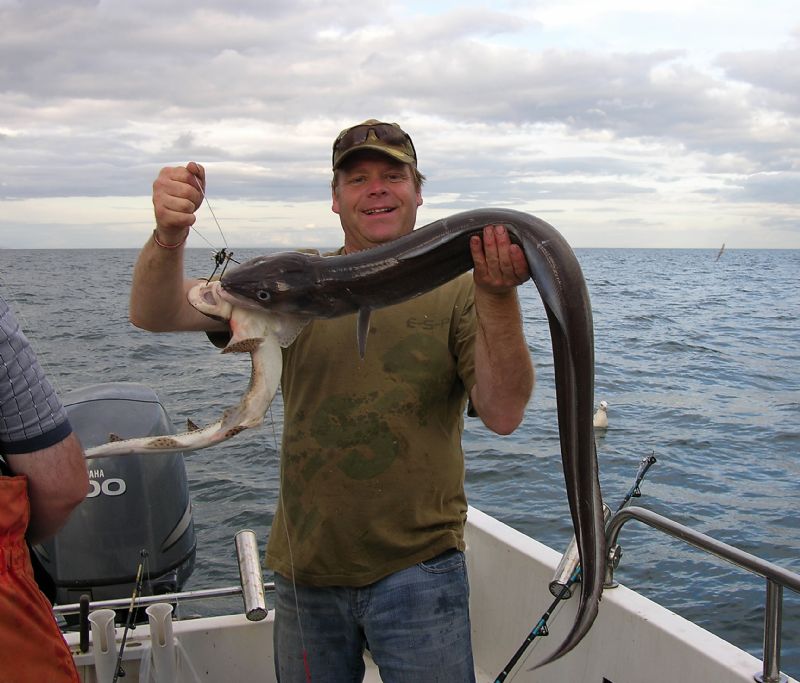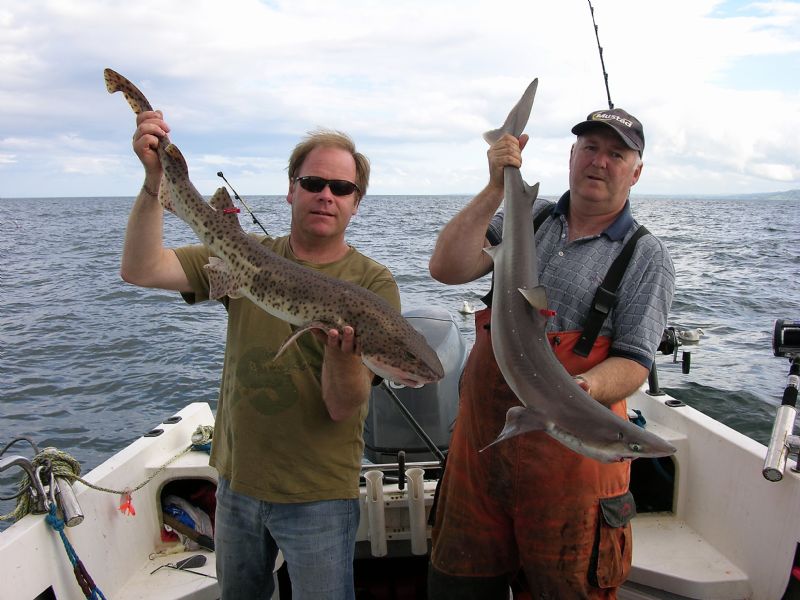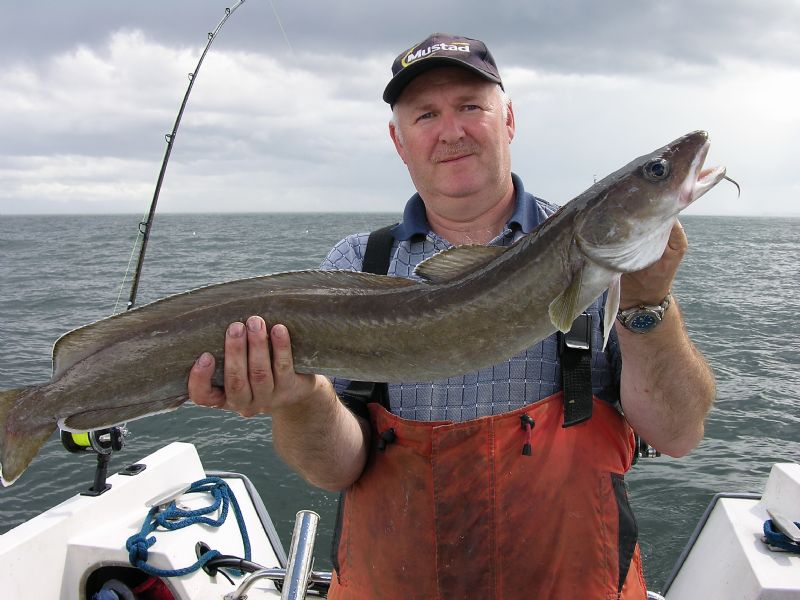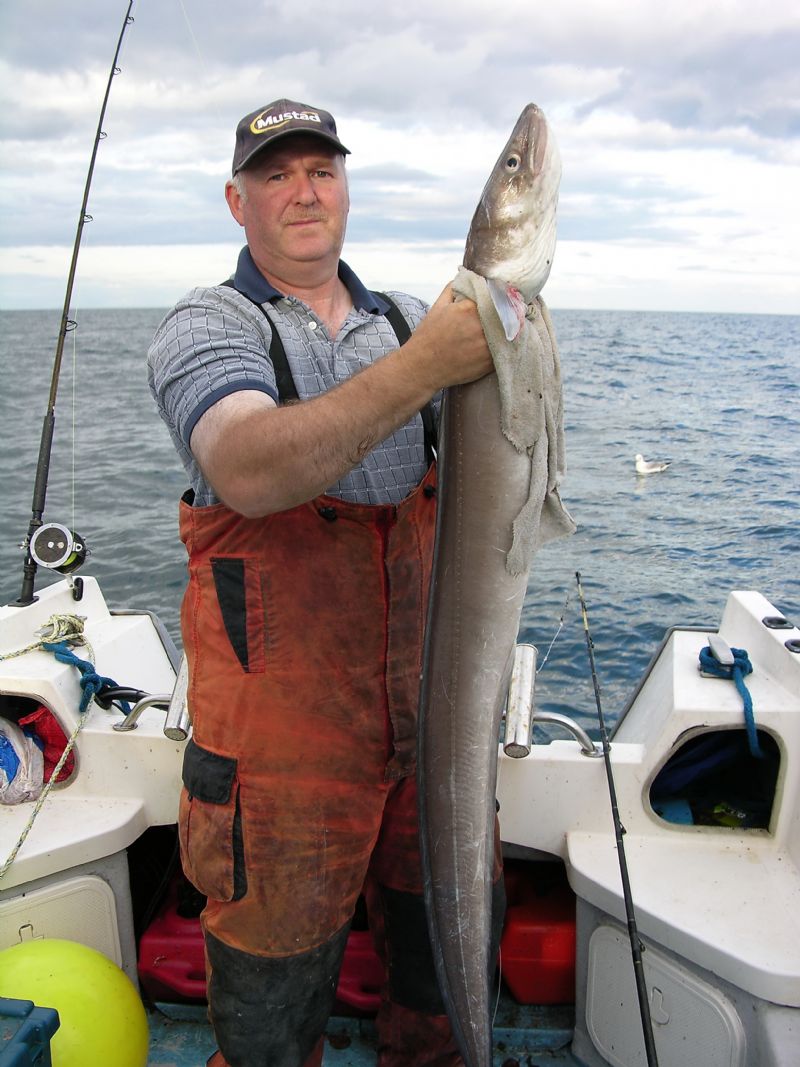Species hunt part 11 Conger Eel
Conger Eel
Fact file
Name Conger eel
Latin name Conger conger
Irish record 72 lbs taken in June 1914 at Valentia by J.Green
Specimen weight 40 lbs or18.144 kilos
The trip
One species I haven’t covered in a while is the Conger Eel, and it was high time, I thought, to rectify this! I have caught quite a few on my local marks, but they have always been bonus fish rather than something deliberately targeted. Unfortunately, I don’t know of any particular wreck or reefs that are positively guaranteed to produce a decent Conger, apart from those fabulous marks outside of Cork Harbour that Jim and Sean Clohessy do so well on. I have had many memorable Conger trips with Bryan Byrne, East Ferry charter skipper and former owner of Lagosta 2 on these marks over the years. However, I am afraid that towing my Fast Fisher to Cork was simply not an option on this occasion!
Most of the eels that I catch are from deep water over “patchy” ground, that is to say, the seabed is generally sand and shell with broken areas of reef and mussel beds. To target Conger on these marks would be slightly hit or miss. However, there are a few particular hot spots where, going on past performances, the scales may be tipped in my favour. To make the most of these deep-water marks, it is preferable to fish on neap tides, maximising the time that can be spent with baits actually on the seabed. Spring tides are almost un-fishable, and four pounds of lead to “hold bottom” is certainly not my idea of fun!
Juggling tides and wind direction is never easy when planning an angling trip, but eventually a window of opportunity appeared, and Dave Craig, Michael Mcgimpsey and I were at the harbour, raring to go. Big Phil and Andy Jones were already out and over the inshore banks searching for Mackerel, and we were soon alongside, following the same drift. This late in the season, Mackerel shoals are thinning out, and were difficult enough to find. Eventually, we settled with a few dozen fresh baits along with a couple of bonus Herring and Whiting. Whiting in particular are under-estimated as a top predator bait, but can be un-beatable at times for Spur dog, Tope, Bull Huss, and of course, our target species, Conger. They also help to bulk out the bait supply, but to be on the safe side; a few dozen pre-frozen Mackerel were brought along as emergency back up.
Granted, these are not usually as effective as fresh bait, but on more than one occasion, I have witnessed frozen Mackerel totally out-fish the fresh stuff. Phil and Andy decided to persevere over the inshore banks in search of rays, Turbot and Codling. As Congers were our quarry for the day, we said our goodbyes and headed for the horizon. Over the mark, and with the anchor firmly holding the boat in position, it was decision time regarding tackle set up. The lads were ready to go, as they had taken the opportunity to set up during the journey seawards, and were soon dropping fresh fillets down through the depths. As for myself, I was in two minds whether to fish with lighter, balanced tackle for sport, or over-the-top heavy gear should something larger appear!
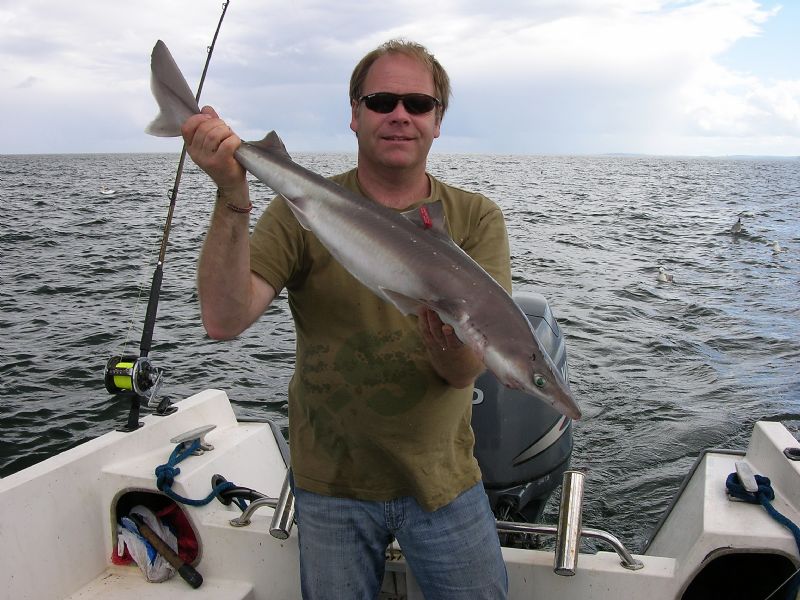
A nice Spur but not our target species on this occasion
To explain, over the last four trips, I have lost five Common Skate, and broken two rods in the process, when these huge creatures have, on each occasion, picked up small hook-baits destined for smaller species. It was becoming a joke, that maybe this beast was following me around the country, intent on gathering numerous pieces of my tackle collection! With this in mind, I opted this time, for the heavy gear. My eighty-pound class Mitchell rod is definitely over-kill for most Irish angling, but handles the big fellas quite well.
Although we were fishing a neap tide, the tidal strength was still quite powerful. It would be another hour before conditions were suitable to present our baits correctly. Dave and Mike were becoming edgy, wondering whether or not the fish would appear over this tide, but although it had been some time since I had fished this mark, it was following a familiar pattern. The fish would not appear until the tide eased dramatically. To allay any fears that we were missing something, I called Phil and Andy on the VHF. Although they had some Codling and a couple of small rays, it was not enough to tempt me inshore, and we agreed to stay put and see the tide through.
Mike finds a delicate Black-mouthed dogfish
A wise decision, as shortly after the radio call, the rods began knocking, and Lesser-Spotted Dogfish queued to be caught. We all know these can be a nuisance when other fish are sought after, but take it from me, when larger predators appear on the scene, the dogs back off and give them room. In fact, I believe that the added commotion a pack of dogs create on the seabed actually attracts other predators to the area. It’s a bit like David Attenborough’s hyenas around a carcass on the Savannah. It’s not long before a stray lion moves in to take what it wants, and the scavengers scatter!
Dave has no difficulty in finding our quarry
Just keep dropping the baits down, working through the dogfish until a different species turns up. And sure enough, Dave lifted into something a little larger that turned out to be our target species. It was only a juvenile by Conger standards, tipping the scales at eight pounds, but a Conger none the less for a photograph. This must have been my easiest mission yet, although saying that, I still hadn’t caught one! Mike was next, with a fine Black Mouthed Dogfish, just below specimen size, and I quickly followed with a small Ling. We were working our way through the species quite well, when Dave added a decent Bull Huss to the ever-growing list. This is the attraction with deep-water angling. Although certain species can be targeted with a reasonable degree of accuracy, you can never be totally sure what surprises are in store with each nudge or thump on the rod tip! There was another Eel for Dave, this time slightly larger, and soon followed by a decent Ling. A resounding thump on my heavy outfit produced a double figure Spur dog, and a double shot next drop gave Dave and me a fourteen pound Huss and specimen Spur dog respectively.
A small Ling for yours truly
Our conger hunt was rapidly turning into a multi-species bash, with plenty of quality fish coming to the boat. Mike un-intentionally provided a service by catching all the nuisance dogs and a few Black Mouths. As the bite rate begun to ease, the heavy rod secured in the rod-holder gave a shudder, and the rod tip vibrated twice. Experience warned me that this might be the initial attention of a “barn door”, an experience that has left me worse for wear over my last four trips! In preparation, I slipped on the shoulder harness and butt pad, carefully watching for further signs that the giant “flattie”, if that was what it was, had taken the Conger bait. With my line now travelling up-tide, it was time to take up any slack line and lift and hope. The rod bent as if I had hooked the seabed, and the battle commenced. It isn’t really a fight with a Skate but more an exhausting tug of war, and one that can last over two hours if you are unlucky, although thankfully, most battles average around thirty or forty minutes. With this Skate having taken a bait on the correct tackle; I was intent on bringing it to the surface, hopefully without any tackle breakages this time!
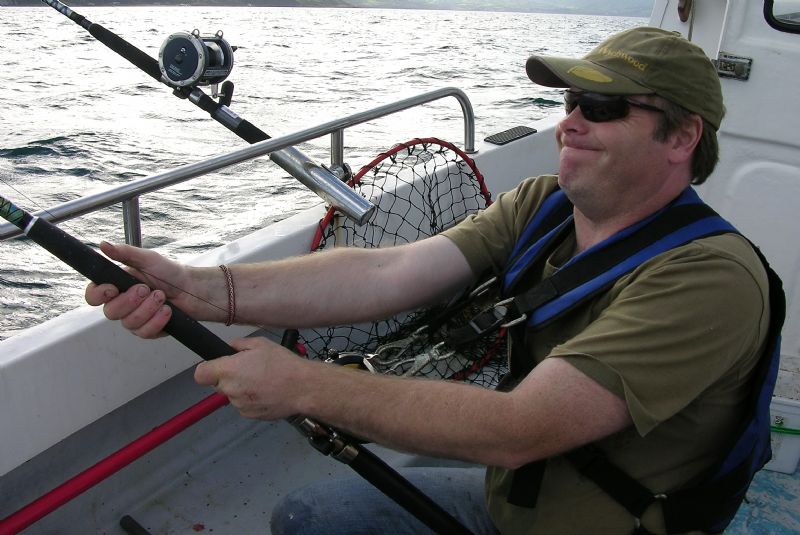
Skate on, now the hard part!
Thirty minutes later, and steadily gaining line, the large, greenish-white glow of the under-belly showed, looming up from the depths. With the deck cleared of clutter, and gaffs at the ready, the Skate was expertly lifted over the gunnels and onto three tackle boxes pushed together. This makes life easier when lifting the fish back into the water. The gaffs are no cause for concern and do not harm the fish in any way, as long as they are positioned in the extremities of the wings, away from any vital organs. Multiple re-captures of tagged fish provide valuable information regarding this system of catch and release. This was a male fish, and measurements put him in the 120lb bracket. It took three of us to lift him back over the side, and he took my best beer towel with him, as it hooked on one of the tail thorns. A beautiful fish it has to be said, and some excitement for half an hour, but I still hadn’t caught my target species!
Great to see a Skate breaking the surface, always an un-forgettable experience
A quick shot before release
With hands still shaking from the adrenaline rush, my re-baited rig was dropped over the side, praying in earnest, that no more Commons would appear. The tide was on the turn now, and time was running out before the rapidly increasing current would become too strong to continue. Dave lifted into a powerful fish, resulting in the biggest Conger of the day. A decent twenty pounder, quickly photographed and returned. It was time for a move inshore, and as we began the tidy up, with my rod as always, the last to be reeled in, the rod tip thumped indicating something had taken an interest in my Pennell rigged Mackerel bait. Lifting into a decent fish, it was obviously not a Dogfish, and I was extremely relieved to feel it was not a Skate either. As luck would have it, in the dying seconds of the session, I landed my first Conger of the day, along with a Dogfish.
At long last, the target species, and a bonus doggie
Both had fought over the bait, each becoming hooked on the Pennell! The dog was either brave, or extremely hungry. A call to Phil told us that the inshore banks had fished poorly. This is no reflection on angling skills, but a sad fact that these once fantastic marks were devastated by a local commercial trawler three years ago, and have failed to recover to even a shadow of their former glory. As anglers and conservationists, we must call for permanent protection of our inshore waters, species and habitat before they are gone for good. Nominated Marine Protected Areas (MPA’s) are, in my opinion, the only hope we have left, if the powers that be will get off their backsides and implement them. With all legal commercial vessels fitted with satellite black box technology, the MPA’s could be monitored and reasonably well protected. It has been shown to work in several countries around the world, where commercial over-fishing has caused major concern. With a little foresight and understanding, we may all be able to share and enjoy the seas that surround us. The fish belong to all of us, not a chosen few!
Bait
Conger Eels are primarily fish eaters. They will target, and indeed prefer fodder fish that inhabit the same rough ground areas. These include Pouting, Whiting, Coalfish, small Pollack, Rockling, Poor Cod, Squid, Cuttlefish, Crab and Lobsters, species that are easily ambushed from a rough ground “lair” or hole in a wreck. The oily content in Mackerel makes them highly desirable as bait. Some of my more notable Conger captures have been taken on whole fillets of Rainbow Trout.
Nice double-shot of a huss and a spur
Tackle
For some reason, Eel captures weighing over 60 lbs on rod and line are quite rare in Ireland, so heavier tackle in the 50lb class is not usually necessary. 20-30 lb class rod and reel is usually enough to cope with most Conger we encounter. Of course, depth, tidal strength and habitat will have some input into the ideal choice, not forgetting of course, the chance of a rogue Skate that may turn up! Conger eels are powerful fish, with equally powerful jaws and strong teeth. To combat this, hook lengths must be constructed using suitable wire or commercial mono of at least 100lb B/S. I use 250lb B/S mono with no notable reduction in “takes”, or fish losses. This also copes with other large species that may come along. Quality swivels should also be incorporated to cope with the strain a large and angry eel will put on tackle, and will serve to combat line-twist if the fish decides to “spin” when it reaches the surface. Only use bronze hooks. The likelihood of deep hooking means a bronze hook can be safely left inside the eel if necessary, and will eventually rust. I have yet to try circle hooks for Conger, this may be an option to prevent deep hooking; I have found they certainly work well with Spur dogs and Smooth hound. Mustad O’Shaughnessy’s are a superb hook for predators including Conger, and sizes 6/0-10/0 are ideal depending on bait size. As Conger normally prefer static bait, keep hook lengths short. I have taken plenty of eels on short, four-inch snoods, paternoster style, in search of Ling. A running ledger can be an excellent method, but again, restrict the length of leader to less than thirty-six inches for best results. Don’t forget to carry a T-bar and pliers to ease un-hooking, and side cutters to chop a hook or wire trace if required.
Recommended rod.....Shakespeare Ugly Stik GX2 20-30lb Boat Rod - Black, 2.36 m
Recommended reel.....Penn Squall 30 Level Wind LEFT HAND Star Drag
Decent Ling for David
Tactics
A very successful method in Ireland, that originated I believe, from the lads in Cork, is a single-hook pirk, baited with a fillet of Mackerel and dropped to the seabed. When a Conger shows interest, slowly lift the pirk off the bottom and the eel will follow. When the eel takes the bait, it will head for the safety of the seabed, giving a very positive bite. Set the hook and hold on! By this stage, the eel should be away from any potential “snags” and can be fought in open water. Wrecks are the obvious choice for larger eels, along with deep-water rough ground gullies, peaks and pinnacles. Shallow reefs tend to produce smaller eels up to twenty pounds, but in larger numbers. It is normal in the shallow marks up to sixty feet deep or so that Conger will only feed during the hours of darkness. The deep-water marks will produce Conger during day light hours. Small, whole fish, dead or alive are excellent, and when using Mackerel, a “flapper” can be deadly. This is a whole Mackerel, cut from tail to gills on either side, removing the backbone, but leaving head, flank and guts. The blood, juices and scent trail are irresistible to large predators. For maximum results, almost all Conger fishing is under-taken at anchor.
A twenty-pound plus Conger for Dave, one day I will catch him smiling!
Interesting facts
Conger Eels are usually grey in colour with a lighter under-belly. They can be caught over sand on rare occasions, and will appear a great deal lighter, almost pale, sandy brown. To identify between small Conger and freshwater eels, the dorsal fin of the conger begins just behind the pectorals, the freshwater eel’s dorsal fin begins further back. Eels are the only marine fish that can swim backwards as powerfully as they can forwards. Congers spend their entire life in marine waters, maturing between five and fifteen years then migrate to deep waters of the sub-tropical mid Atlantic to spawn and apparently, die. The larvae are transparent and flat, and drift for up to two years, where they reach the shoreline and begin the change to the snake-like shape of adult fish. Although our record has stood at 72 lbs since 1914, eels have been taken commercially in excess of 250lbs! It amazes me why the record has not been broken many times over. I remember Pat O’Callaghan, a favourite Killybegs skipper of mine telling me about an eel taken on a hand line in Killybegs Harbour, measuring eight feet long and weighing in at 90lbs. The Curator of Exploris, my local sea aquarium told me that they once released one of their captive eels because it was too large, and estimated it at over 120 lbs, that took four people to lift it, so anything’s possible!




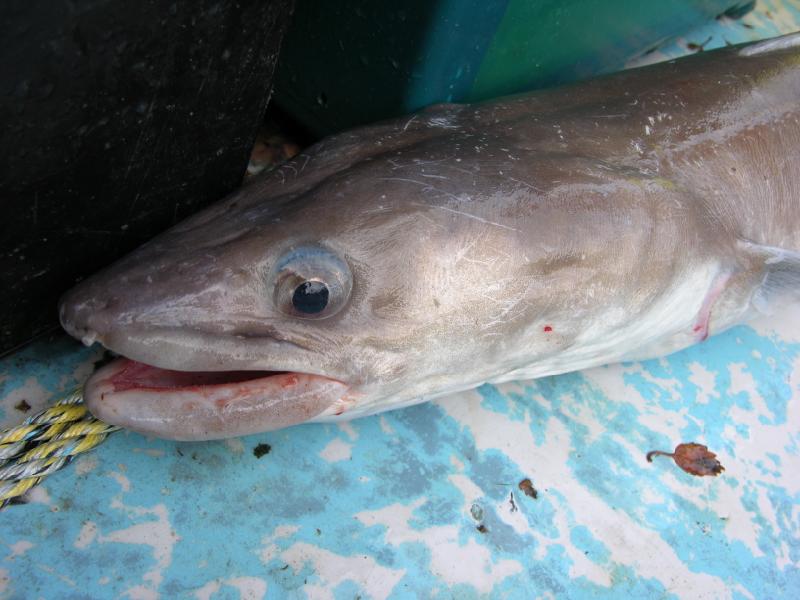
.JPG)
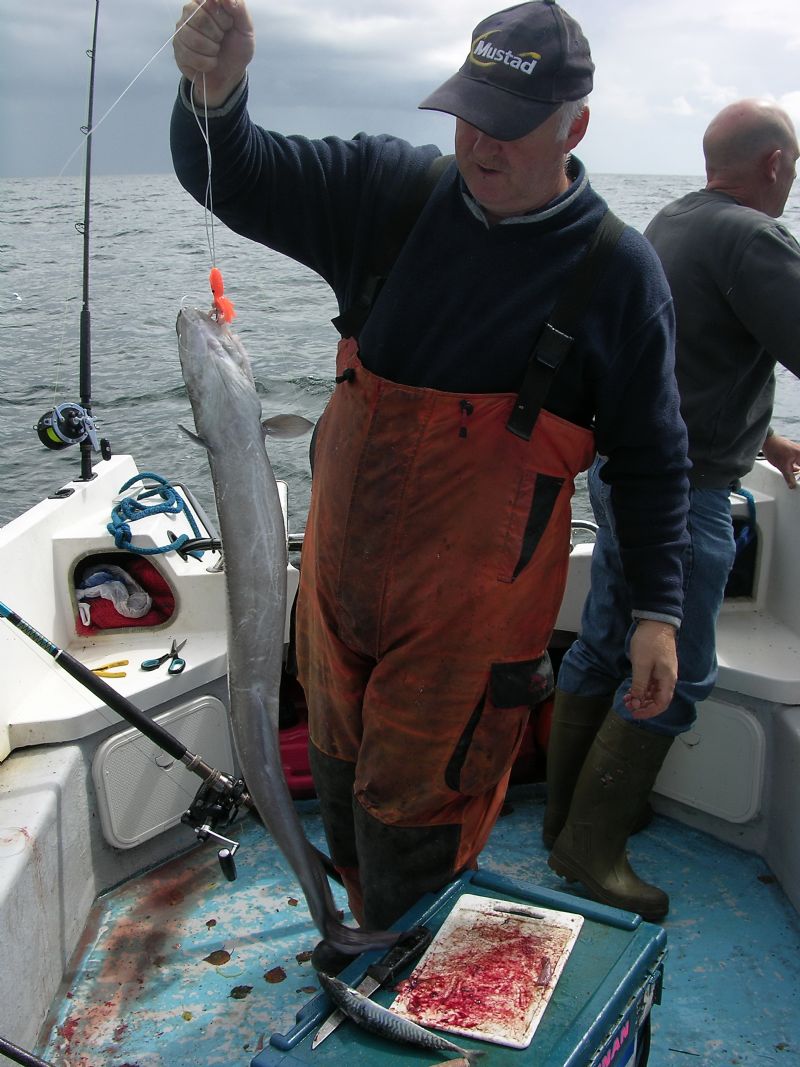
.JPG)
